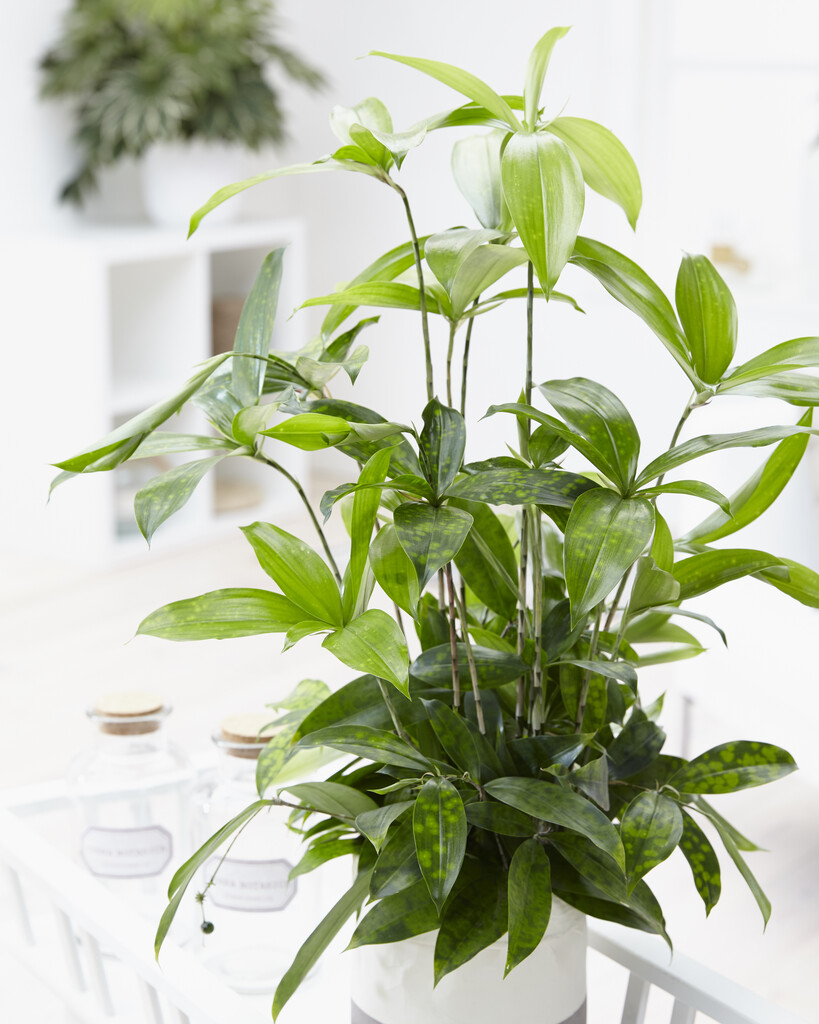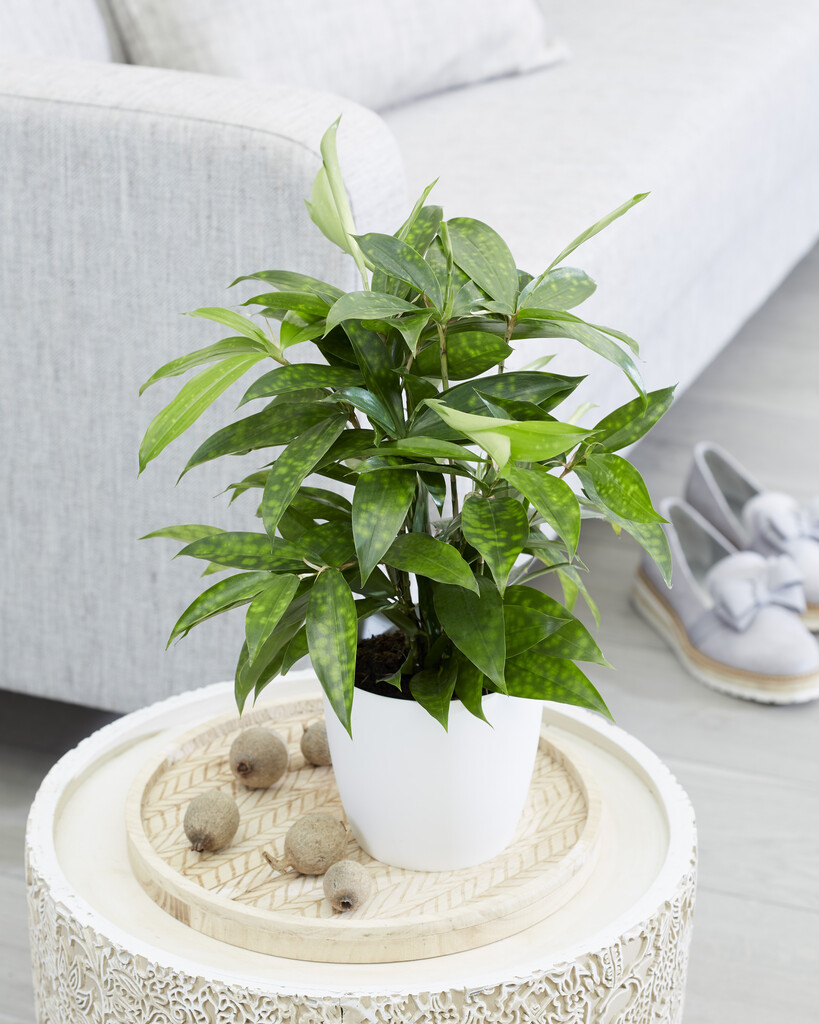Dracaena surculosa
gold dust dracaena
A tropical evergreen shrub, with slender, upright stems to 3m high. Leaves are glossy, narrowly oval and sometimes blotched with white. Mature plants sometimes produce long clusters of small greenish-white flowers, followed by round, bright red berries
Size
Ultimate height
2.5–4 metresTime to ultimate height
5–10 yearsUltimate spread
0.1–0.5 metresGrowing conditions
Moisture
Moist but well–drainedpH
Acid, Alkaline, NeutralColour & scent
| Stem | Flower | Foliage | Fruit | |
| Spring | Green White | |||
|---|---|---|---|---|
| Summer | White | Green White | ||
| Autumn | Green White | Red | ||
| Winter | Green White |
Position
- Full sun
- Partial shade
Aspect
East–facing or South–facing or West–facing
Exposure
Sheltered Hardiness
H1BBotanical details
- Family
- Asparagaceae
- Native to GB / Ireland
- No
- Foliage
- Evergreen
- Habit
- Columnar upright
- Potentially harmful
- Pets (dogs, cats, rabbits, rodents): Harmful if eaten. For further information and contact numbers regarding pets, see the HTA guide to potentially harmful plants
- Genus
Dracaena are evergreen trees, the few branches bearing linear to lance-shaped leaves often crowded towards the tips; on mature plants, small greenish-white flowers may be followed by orange or red berries
- Name status
Correct
- Plant range
- Trop. W Africa
How to grow
Cultivation
Grow in peat-free, loam-based potting compost, in full light with shade from hot sun. Water moderately in the growing season, preferably with rainwater as plants dislike tapwater. Apply a balanced liquid feed monthly in the growing season; water sparingly in winter. Top dress or pot on in spring. See Dracaena for further advice
Propagation
Propagate by seed, sown at 18-20°C in spring, or by semi-ripe cuttings in late spring to early summer; bottom heat may be required for rooting
Suggested planting locations and garden types
- Houseplants
- Low Maintenance
- Conservatory and greenhouse
Pruning
No pruning required
Pests
May be susceptible to scale insects, glasshouse red spider mite, thrips and mealybugs
Diseases
Generally disease-free
Love gardening
Sign up to receive regular gardening tips, inspiration, offers and more
View our Privacy Policy
Get involved
The Royal Horticultural Society is the UK’s leading gardening charity. We aim to enrich everyone’s life through plants, and make the UK a greener and more beautiful place.

